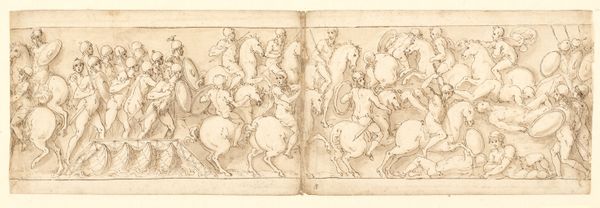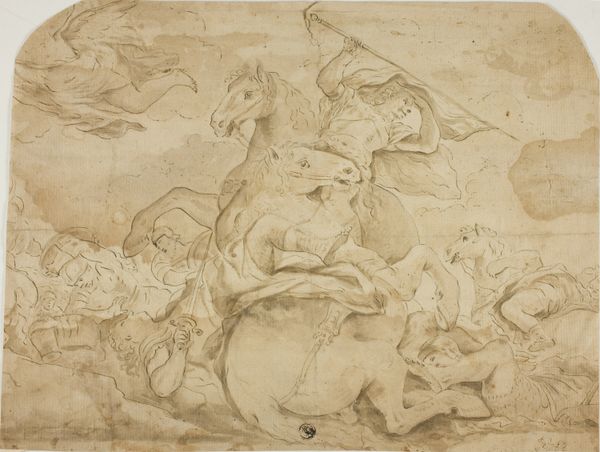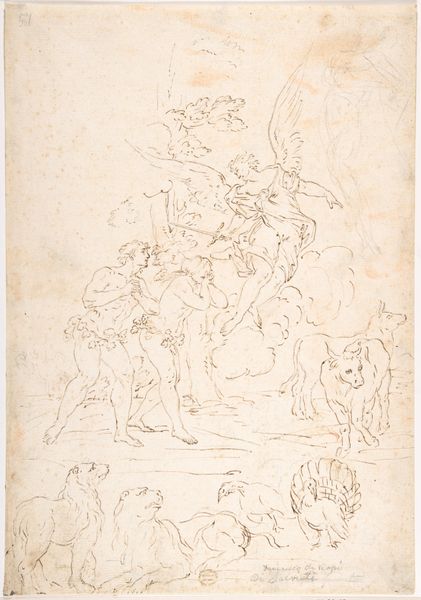
End of a restored part of the column (XLVII); the Sarmatians are pursued into the swamp (XLVIII); the Romans attack a German (?) fortress (beginning of LIV) 1544 - 1618
0:00
0:00
drawing, paper, ink
#
drawing
#
narrative-art
#
etching
#
figuration
#
paper
#
11_renaissance
#
ink
#
history-painting
Dimensions: 133 mm (height) x 432 mm (width) (bladmaal)
Curator: Before us we have a drawing by Giovanni Guerra dating from between 1544 and 1618, rendered in ink on paper. The piece is entitled "End of a restored part of the column (XLVII); the Sarmatians are pursued into the swamp (XLVIII); the Romans attack a German (?) fortress (beginning of LIV)". Editor: It looks like pure chaos! But, like, beautifully rendered chaos. You have these swirling figures, humans and horses all tangled up, chasing and being chased. The sepia tones give it an ancient, almost archaeological feel. Like you unearthed a memory. Curator: Indeed. Guerra was commissioned to create drawings documenting the spiral frieze of Trajan's Column in Rome, a major monument of Roman imperial art and military achievement. This drawing captures several segments, narrating the Roman army's campaigns in Dacia, present-day Romania. Editor: It’s funny how seeing all these bodies – the muscular tension, the panic, you almost forget this is propaganda, right? It's easy to get swept up in the raw, visceral energy of the scene, rather than focusing on the historical victor. I mean, look at that horse rearing up! Incredible. Curator: The power lies, of course, in its reproduction. Disseminating these images via drawing allowed broader access to Roman ideals and military might. Consider how prints and drawings democratized imagery, making it available to a wider audience beyond Rome's elite. The question of perspective is quite loaded, too. Editor: Yeah, it kind of puts a wrinkle in the whole glorification thing. Like, we're distanced, analyzing it rather than bowing down. The vulnerability on some of their faces is remarkable. It’s as if the artist momentarily pulled back the curtain. Almost a bittersweet dance between triumph and terror, wouldn't you say? Curator: Perhaps. Its historical context certainly prompts layered interpretation. It is more than documentation. The piece underscores the visual power that such works exerted within Early Modern European culture. Editor: Definitely given me something to ponder. I’ll leave this visual ballet of ancient battle now with a lingering feeling that’s stuck somewhere between awe, fascination, and a touch of sobering reflection. Curator: It's a piece that encourages us to consider how historical narratives can be both visually captivating and politically charged.
Comments
No comments
Be the first to comment and join the conversation on the ultimate creative platform.













